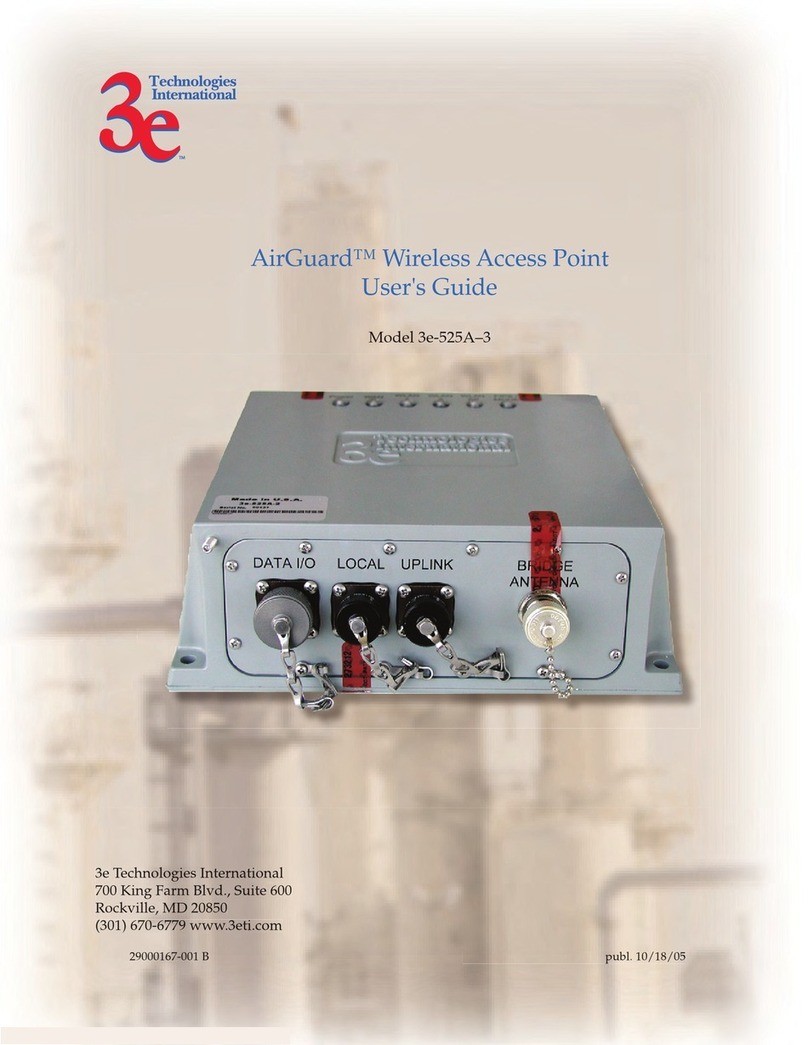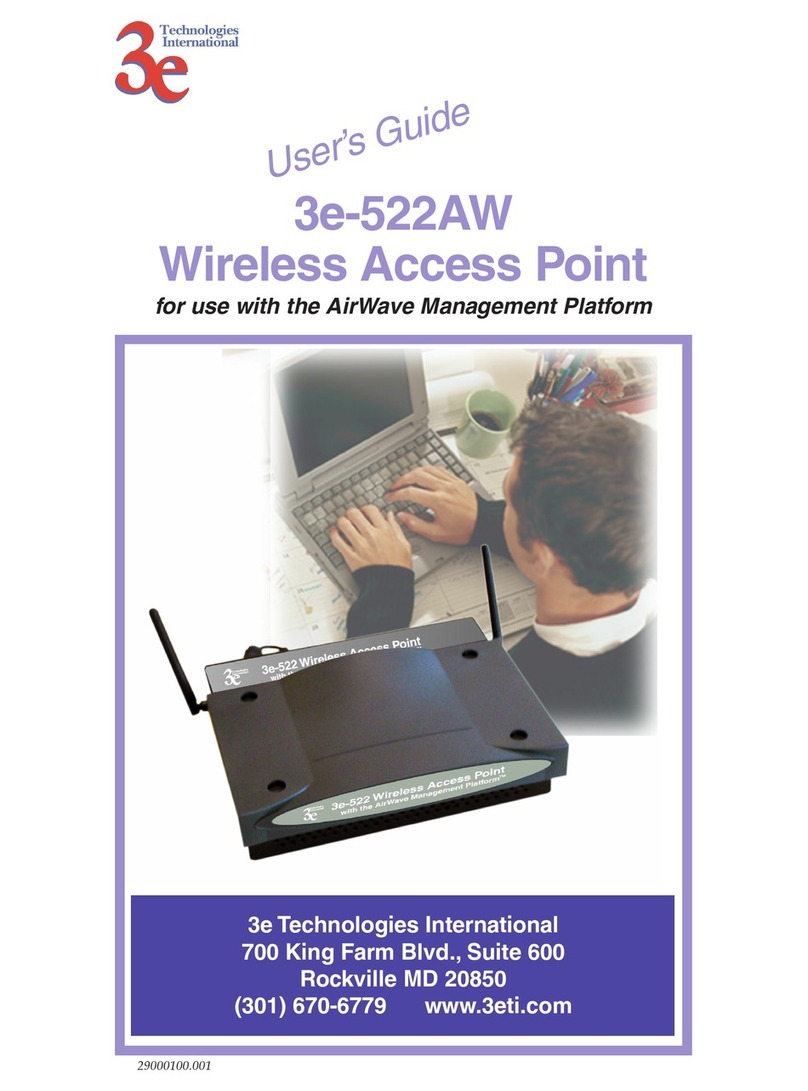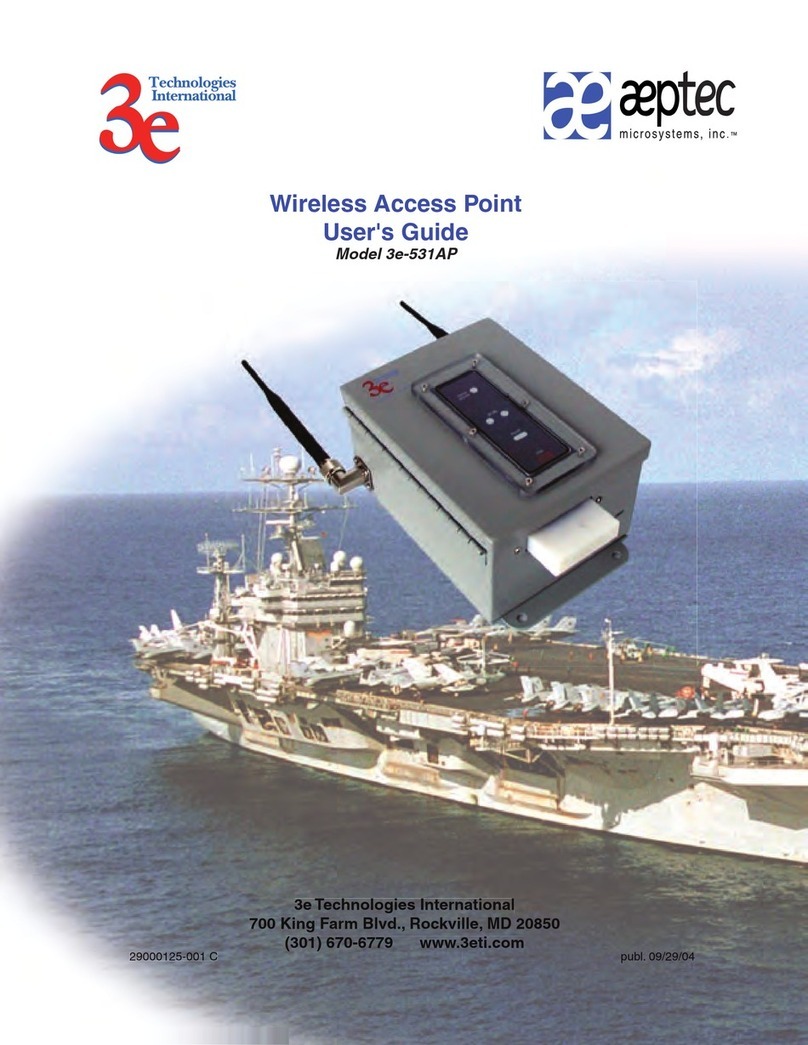
29000155-001 A iii
Table of Contents
Chapter 1: Introduction...................................................................................................1
Basic Features .............................................................................................................2
Wireless Basics............................................................................................................2
802.11b.......................................................................................................................3
802.11a .......................................................................................................................3
802.11b/g Mixed......................................................................................................3
802.11 Super G and Turbo A...................................................................................3
Network Conguration ..........................................................................................4
Access Point Congurations..................................................................................4
Possible AP Topologies.........................................................................................4
Bridging ....................................................................................................................5
Data Encryption and Security................................................................................6
SSID ...........................................................................................................................6
WEP ...........................................................................................................................6
WPA with TKIP/ AES-CCMP................................................................................6
AES ............................................................................................................................7
MAC Address Filtering ..........................................................................................7
DHCP Server............................................................................................................7
Operator Authentication and Management ........................................................7
Management...............................................................................................................8
3e–525C–2 Navigation Options ...............................................................................9
Chapter 2: Hardware installation................................................................................11
Preparation for Use..................................................................................................11
Installation Instructions ..........................................................................................12
Minimum System and Component Requirements ............................................12
Connectors and Cabling .........................................................................................13
Bridge Transmit Distance........................................................................................14
Bridge Antenna Location........................................................................................14
Outdoor Protection Kit Installation.......................................................................15
Earth Ground Connection....................................................................................16
Lighnting Arrestor Installation............................................................................16
Antenna Installation................................................................................................17
Sealing Antenna Connections..............................................................................17
Mounting Kit Setup .................................................................................................18
The Indicator Lights..............................................................................................18
Chapter 3: Access Point Conguration ......................................................................21
Introduction ..............................................................................................................21
Preliminary Conguration Steps...........................................................................21
Initial Setup using the “Local” Port ......................................................................22
System Conguration..............................................................................................24
General....................................................................................................................24
WAN........................................................................................................................25
LAN .........................................................................................................................26
Wireless Access Point Conguration ....................................................................27
General....................................................................................................................27
Security ...................................................................................................................30
No Encryption .....................................................................................................30
Static WEP Encryption ......................................................................................31
802.11i and WPA .................................................................................................32
MAC Address Filtering ........................................................................................34
Rogue AP Detection ..............................................................................................35

































